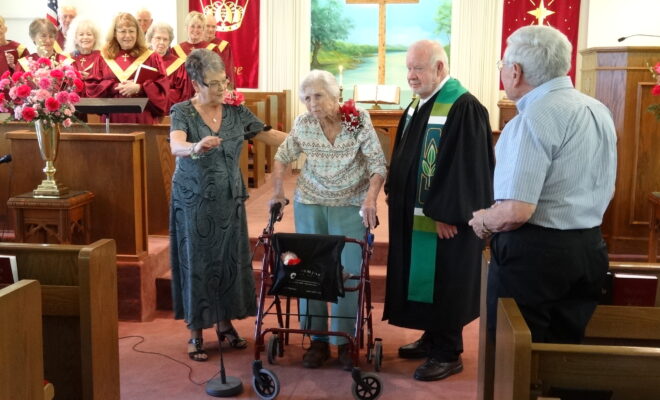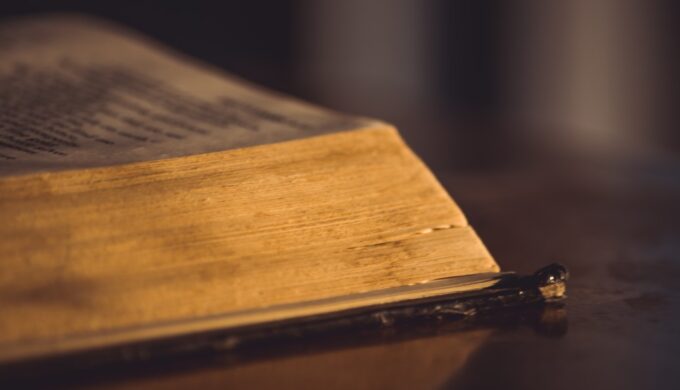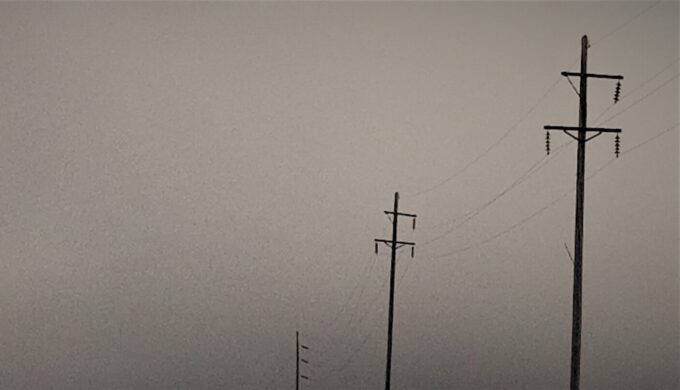Pearl Goble was born in 1923 in Lampasas County, but she had family here in Kingsland (her grandmother, aunt, uncle and brother all lived here), so she remembers visiting Kingsland “all my life.” Her family would make the trip in their old Ford truck, and “we had to open and close 14 gates” along the way. She moved to Kingsland when she was a teenager, and attended the old Kingsland High School in the late 1930s.
Kingsland was a very small and isolated community back then, and the big event of each day was the arrival of the freight train, on its way to Llano. You could hear the train whistle a few minutes before the train would come around the base of Backbone Mountain. Everyone in town (at least those who were expecting mail, plus all the children) would hurry down to the crossing near the Antlers Hotel. The train didn’t stop in Kingsland; it just went through town and a member of the crew threw a sack of mail out on the street. Grace Lindsey was the postmaster (she lived in a little house behind the post office); she would pick up the mail sack and sort the mail. It didn’t usually take very long!
There were only a few dirt roads coming into Kingsland back then. One was from Llano (the Slab Road, which frequently was closed due to high water levels), and one from Buchanan Dam. Most of the traffic came from Burnet County (Hoover’s Valley, Burnet and Marble Falls). That road crossed the Colorado River on an old iron bridge, built in 1914 with wooden planks forming the roadway. “You could always tell when someone was coming into town,” Mrs. Goble recalls. “The cars made so much noise coming across that bridge. Everyone noticed when a stranger came into town.”
There were only about 15 houses in the “town” when Pearl was going to school. She recalls that the students had to carry water from Neal Wood’s house, down toward the current Senior Center (“He had a windmill,” she explains). Fred Wood ran the grocery store next to the post office; someone put in a dry goods store at one time, “but there weren’t enough people to support it.”
Photo: @robhga116 via Twenty20
There was one church in town: the First Christian Church (now the midsection of the Highland Lakes Senior Center). There was Sunday School every week, but the church was too small to be able to afford a full-time preacher, so worship services were held only when they could afford to pay a preacher to come to Kingsland from another town. On those occasions, there would be about 45 people in church. “I was baptized at The Slab,” Mrs. Goble recalls.
Pearl fell in love before she ever graduated from high school, and married Alvin Goble just before World War II. He was from a family of five boys (no girls) who lived on the Burnet County side of the Colorado River and came to school in a boat. Sometimes, when the river was high, they would have to walk downstream, cross the old bridge, and walk back upstream to school. When Alvin and Pearl first married, they lived across the river with his parents.
When the U.S. entered the war, Alvin and his brother Delbert joined the military. Alvin was in Washington state, preparing to be sent overseas, when the war ended. He was sent to California to be discharged, and Mrs. Goble remembers driving to California with the wife of another returning veteran to pick up their husbands. There was a gas station in each town by then, but the pair had not realized how far it was between towns in west Texas, and they ran out of gas. A tanker truck came by with just enough gas left to get them to the next town!
Photo: @AZ.BLT via Twenty20
After the war, Alvin got a job with the LCRA, putting up utility poles to bring electricity to the rural areas of central Texas. Before then, most ranchers used kerosene lamps for light, and washed their clothes on an “old rub-board.” Telephone service had arrived in Kingsland earlier; there was a “party line,” and almost everyone had a “wind-up telephone.”
The Gobles would get an apartment in each town as he worked in the area, but Kingsland was always home. They bought a little white house in town, and had a big garden. “My husband loved gardening,” Mrs. Goble says proudly. “He always gave away a lot of produce.”
There were a couple of fishing camps in Kingsland even before the dam was built; Mrs. Goble recalls that “the Longs had a camp near where El Rio is now.” (now the site of Wakepoint LBJ). “It’s under water, and probably others are, too.”
Kingsland started to change even before the Wirtz Dam was built in 1950. “As soon as people heard about the dam going in, they started to buy land,” Mrs. Goble recalls. Quite a few old-timers were glad to sell their property; some of the new owners started building, but some were just land speculators. Once the dam was finished and the lake filled up, Kingsland started to grow. “Some people were happy about that,” Mrs. Goble says, “but some people weren’t.”
Read chapter one here.





